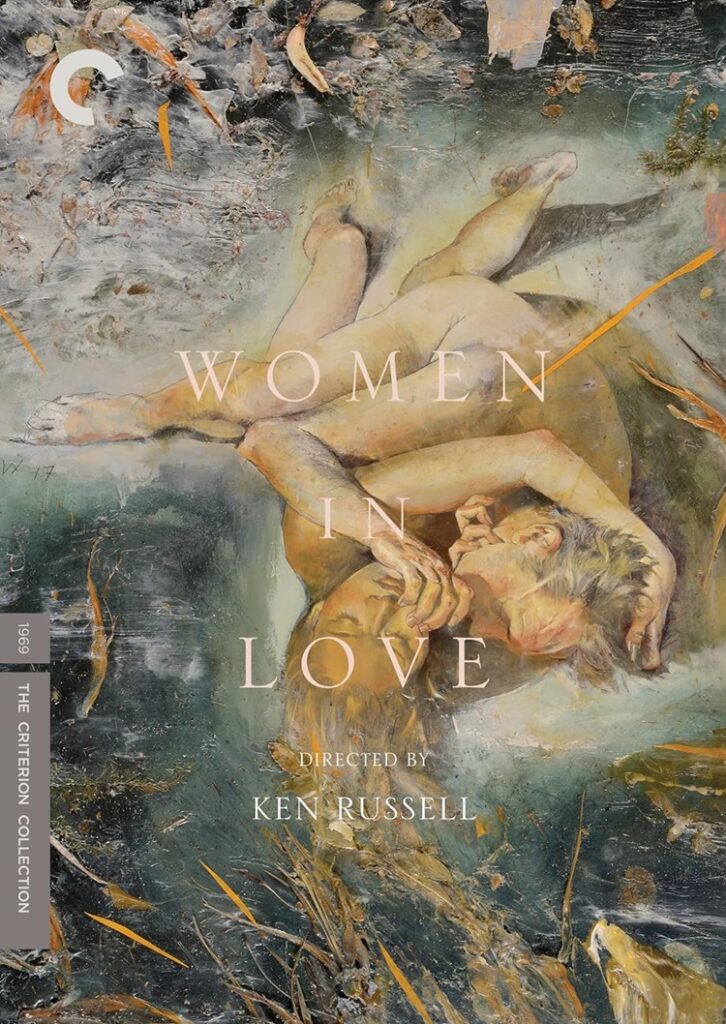
It’s difficult not to compare the time in which Ken Russell adapted Women in Love (1969) to the time in which D.H. Lawrence wrote the novel and the film are set (1920). Both periods were times in which Britain’s social norms were changing. The film’s setting, just after World War I, finds the Victorian-era moral codes along with the staunch upper classes crumbling. The film was made at the height of the sexual revolution when young people were once again throwing off the chains of their parents’ moralizing for newfound freedom. It is impossible then to view the film’s story without taking in the changing morals of the era in which it was film.
Much like the novel, the film was controversial upon its release for its liberal sexuality and (in the film’s case at least) rampant nudity. They are both very interested in philosophy, relationships, and the nature of love. Unlike the novel, the film was an immediate success and won several awards including Best English-Language Film at the Golden Globes and Best Actress for Glenda Jackson at the Oscars.
Set in the small Midlands mining town of Beldover, the film concerns the Brangwen sisters. Ursula (Jennie Linden) is an academically minded school teacher and Gudrun (Glenda Jackson) is a wannabe artist and sculptor. They meet and form romantic relationships with Rupert (Alan Bates), a free-thinking school inspector, who falls for Urusla, and Gerald (Oliver Reed), a hard-edged son of a wealthy mine owner who connects up with Gudrun. The film plots their relationships from its steamy beginnings through to its (in one case tragic) ends. Throughout, the four engage in numerous philosophical discussions about the nature of relationships, commitment, and the varying consistencies of love. There is an overlying undertone of homoeroticism between the two men that is never consummated.
This is where I admit that type of story bores me to tears. I have the hardest time caring about the romantic entanglements of rich white people who are unable to love whom they want to love due to varying cultural norms of a time long since past. It’s the same reason I’ve never been able to make it through a Jane Austen novel. It must be tragic for character who cannot love whom they want because society forbids it, but I just can’t make myself care. Yet, Russell enlivens it with enough potent imagery and raw emotion to keep me always interested and sometimes enthralled. He films the English countryside with a lush softness that is almost dream like and always beautiful. The editing is sometimes jarring and his juxtaposition of images is astounding.
In one scene we see two young people, naked and entwined, washed up dead after an accident in the river transition to Gerald and Gudrun in a similar position, post-coital. In a famous scene, Gerald and Rupert have a naked wrestling bout in the fireplace-lit drawing room.
It is a scene as sumptuous as it is longing, as opulent and meaningful as any scene put to celluloid. These two men – muscular, masculine – sit sipping drinks talking as old friends and suddenly bring up the sweet science of fighting. Before you know it, the rugs have been pulled and the dining jackets removed. There they begin to slap, punch, and toss their naked, pulsating bodies around the room. It is so intimate and erotic, and while it concludes with the two heaving and sweating on the floor, they never cross the line they could never cross. It’s clear that they desire each other full but this is as close as they will ever get to a sexual encounter. When its over, they dress, leave the room, and never mention that moment again.
The four take a holiday in the Alps and it is there things break down. Gudrun meets a bi-sexual artist who belittles and berates Gerald, causing him to lose all sense of his self and destroy any chance he has at love. I have not read the book but but what I know of D.H. Lawrence it all seems within his wellspring of hopelessness. Each character’s perceptions of life and love are tested to the limits and often broken. It is a beautiful film to watch and just as depressing.
Previously unavailable in the Blu-ray format, this 4K restoration from Criterion is stunningly gorgeous. As noted, the film is lush with its earthy colors, soft palette, and soft tones, and it all comes in perfectly clear in this transfer. Likewise, the audio is most excellent. It’s not a noisy film but it is filled with all sorts of nature sounds, all of which come in crisp and clear as if you too were walking in the gardens.
The disk is loaded with extras, both old and new. Imported from the old DVD is audio commentary from Ken Russell, and another one from screenwriter Larry Kramer. There’s also a very entertaining documentary about Ken Russell made by Ken Russell. There are archival interviews with Ken Russell and Glenda Jackson plus new ones with Billy Williams and Michael Bradsell. Also included are on-set interviews with the cast and an adaptation of the short story “Second Best” by D.H. Lawrence made for TV in 1968 and starring Alan Bates.
Women in Love was a huge critical and commercial success in Britain back in 1969. It is a beautifully shot, not wholly faithful adaptation of the novel that still succeeds as a product of its time. While I didn’t particularly care for the story of confused rich people, I was enthralled with the look and feel of the film. Criterion has given it a stunning transfer and loaded it with extras.